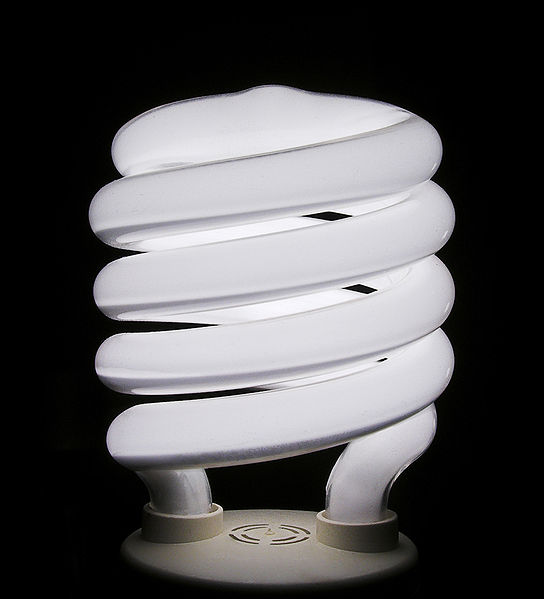Dr. Weeks Comment: More and more people are catching on that the energy efficient bulbs (compact fluorescent bulbs) are TOXIC. They cause diabetes, for example. We reported on this government enforced plague few years ago. Six years ago, my daughter Anastasia presented data to her school but the school board and the district superintendent discounted her data and did the predictable thing: they asked the local power company if electrical pollution is a valid concern. If you wonder what the answer of the power company was…. well then, you are simply not paying attention.
Study says energy-efficient light bulbs may emit harmful radiation

By: John Hayward
7/23/2012 09:56 AM
As reported by the Washington Examiner, a study from Stony Brook University “has proven that CFLs do emit ultraviolet (UV) light rays that can harm human skin cells.” CFLs are compact fluorescent light bulbs – the expensive spiral light bulbs we have been forced to begin using, after incandescent light bulbs were regulated out of existence.
We already knew CFLs were dangerous if you drop them and break them. They contain mercury, so a complex hazardous-materials procedure is recommended by the EPA when they break. You don’t just sweep the broken glass up with a broom. The first three steps of the EPA procedure involve clearing people and pets out of the room where the CFL bulb was broken, airing it out for 5-10 minutes, and shutting down your central heating or air conditioning system to prevent poisonous mercury vapors from contaminating the house. Vacuum-cleaning the area where the bulb shattered would be a dangerous mistake, because it could spread mercury vapors. Oh, and plastic bags don’t fully contain those vapors, so be sure to get the bagged broken glass out of your house ASAP! The rest of the instructions run for a total of three pages.
But now it turns out these bulbs can be dangerous even when they don’t break. The problem is that CFL bulbs emit a high level of ultraviolet light, which is supposed to be trapped by the phosphor coating inside the glass. (The phosphor coating is what makes the glass of the light bulb appear to be milky white.) The phosphor glows, and light is emitted, with relatively little energy wasted as heat.
If the phosphor coating is cracked, UV rays escape from the bulb, causing damage to exposed skin cells from prolonged exposure at short ranges. A European study cited by the Examiner showed that prolonged exposure at distances of 8 inches or less “may approach the workplace limit set to protect workers from skin and retinal damage.”
The really bad news is that the Stony Brook University study found that all of the CFL light bulbs they studied had cracks in the phosphor coating. They purchased bulbs from different stores in two different counties, and every one of them emitted a significant level of ultraviolet radiation. Double-walled bulbs – the kind that feature a traditional light-bulb-shaped shell over the twisty CFL core – are considerably safer, as the outer shell absorbs excess UV radiation from imperfect phosphor coatings.
The risk of UV exposure from CFL bulbs is manageable – either use the double-layer bulbs, or take care to sit at a safe distance from lamps. Still, this seems like the sort of thing that would provoke some concern, if CFL bulbs had not already been sanctified by regulatory decree. Imagine, in the waning days of the incandescent bulb, if a secret three-page corporate memo outline elaborate safe procedures for the disposal of broken incandescent had been discovered, or a study had revealed that virtually every light bulb had a design flaw that caused it to emit potentially unsafe levels of radiation.
`

